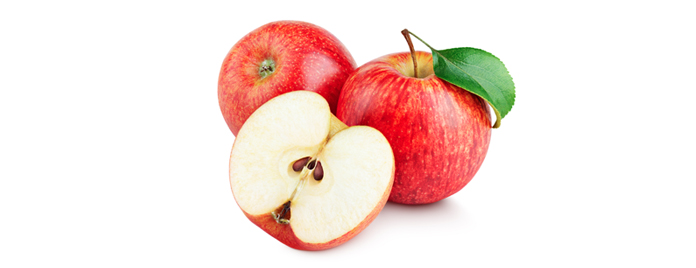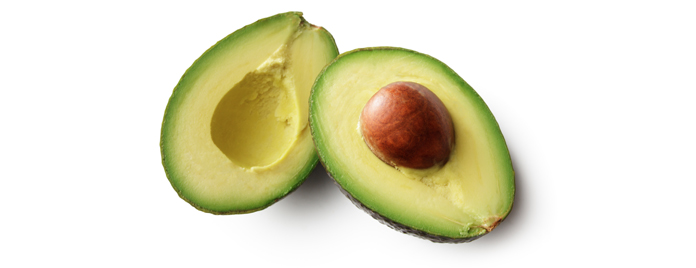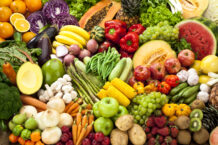Many people try healthy eating to improve their diet. Yet it isn’t always clear which dietary guidelines are important, or how to apply them on a day-to-day basis.
Developing healthy eating habits isn’t as confusing or as restrictive as many people imagine. Simply put, foods derived from plants—vegetables, fruits, whole grains, legumes (such as beans and lentils), and nuts—should make up the bulk of the calories you consume. If you eat animal foods, you can add in some dairy products, fish, poultry, and lean meat. Studies show that people who eat this way have a reduced risk of heart disease, diabetes, and possibly cancer and other chronic diseases.
Such a diet is similar to the Mediterranean diet, which emphasizes plant foods, notably olive oil, and has been linked to reduced disease risk and longer life expectancy. It’s also similar to the U.S. government’s DASH (Dietary Approaches to Stop Hypertension) eating plan, which is proven to lower high blood pressure and have other health benefits. The healthy eating diet we recommend can help with weight control as well, especially if you follow these tips 18 Keys to Healthy Weight Control.
Keep in mind that healthy eating doesn’t have to mean eating foods that are bland or unappealing. In fact, you should view healthy eating as an opportunity to expand your range of choices—especially of vegetables, whole grains, fruits, and other plant foods that you don’t normally eat. You may want to look for more local, seasonal foods, which are often fresher, taste better, and help support local farmers. Following our basic steps doesn’t mean that you have to give up your favorite foods, either. As long as your overall diet is balanced and rich in nutrients and fiber, there is nothing wrong with a cheeseburger, a couple of pats of butter, or a cup of ice cream on occasion. That is, if you eat healthfully 90 to 95 percent of the time, the rest of your diet can include such indulgences.
Healthy Eating, Easy as 1, 2, 3 . . .
The following guidelines provide the essentials for healthy eating.
1. Eat a variety of healthy foods. Not all the nutrients and other substances that contribute to good health have been identified, so eating a wide assortment of healthy whole foods like fruits and vegetables helps ensure that you get all of the health-promoting benefits that foods can offer. If your diet, day after day, consists of the same half dozen foods, it could fall short. In addition, varying your food choices will limit your exposure to any pesticides or toxic substances that might be present in particular foods. However, varying your diet can backfire if it causes you to eat more food, especially unhealthy items (see key #9 below).
2. Focus on high-fiber foods, notably vegetables, fruits, legumes, and whole grains. These are the “good” carbohydrates—nutritious, filling, and relatively low in calories. They should supply roughly 20 to 35 grams of dietary fiber a day, depending on your calorie needs. (Aim for 14 grams of fiber for every 1,000 calories, as advised by the 2020–2025 Dietary Guidelines for Americans: For example, 21 grams if you eat 1,500 calories a day and 35 grams if you eat 2,500 calories. People with diabetes should aim for even more—15 to 25 grams per 1,000 calories.) Fiber slows the absorption of carbohydrates, so they have less effect on insulin and blood sugar, and it provides other health benefits as well. High-fiber foods also supply important vitamins, minerals, and potentially beneficial phytochemicals (plant compounds). Try to fill three-quarters of your plate with vegetables, fruits, legumes, and whole grains—leaving only one-quarter of your plate for meat, seafood, poultry, eggs, or other protein sources.
3. In particular, eat lots of produce. For a 2,000-calorie daily diet, aim for 2½ cups of vegetables and 2 cups of fruit a day. If you consume more calories, aim for more produce; if you consume fewer calories, you can eat less. Include green, orange, red, blue/ purple, and yellow vegetables and fruits. In addition to the fiber, the nutrients and phytochemicals in these foods may help protect against certain types of cancer and other diseases. Legumes, rich in fiber, can count as vegetables (though they have more calories than most vegetables). For more fiber, choose whole fruits over juice. Frozen and canned fruits and vegetables are good options, but be aware of added salt in vegetables, and look for canned fruits packed in water or with little added sugar.

4. Limit your intake of sugary foods and beverages and refined grain products, such as soda, candy, white bread, regular pasta, and many snack foods. A high intake of added sugar increases inflammation and insulin resistance, increasing the risk of diabetes, cardiovascular disease, and other disorders—and it supplies “empty” calories that contribute to weight gain. (Foods that naturally contain sugars, such as fruit and milk, do not pose these risks.) Refined grain products have little dietary fiber and have been stripped of many nutrients; a high intake can cause many of the same health problems as added sugar. And, of course, many baked goods are high in both sugar and refined grains—as well as fat and calories.
5. Go for whole grains. At least half your grains should be whole grains, such as whole wheat, oats, barley, or brown rice. Whole grains retain the bran and germ and thus all (or nearly all) of the nutrients and fiber of the grain. It can be hard to identify truly “whole grain” foods, however. One sure way of finding whole grains is to look for a product labeled “100% whole wheat” or “100%” of some other whole grain. If the label doesn’t say that, you can look for a whole grain listed as the first ingredient, though there still may be lots of refined wheat in the product. Another option is to look for the voluntary “Whole Grain Stamp” from the Whole Grains Council. Or try this tip: Look for less than a 10-to-1 ratio of “total carbohydrates” to “fiber” on the nutrition label. That’s the ratio found naturally in whole-wheat flour, and it helps identify whole-grain foods that are not only high in fiber but also lower in refined carbs and added sugars (both included in “total carbohydrates”).

6. Limit your intake of highly processed foods. Food processing isn’t a bad thing, of course: Cooking and preparing raw ingredients at home is also processing them. But the word “processed” is almost always reserved for commercial foods, usually packaged. Highly processed foods are industrially formulated, multi-ingredient mixtures that are no longer recognizable as their original plant or animal sources—everything from hot dogs, margarine, and many frozen entrées to most baked goods, ice cream, and candy. Such foods, which supply more than half the daily calories in most U.S. households, are lacking in key nutrients and fiber and are high in sugars and sodium. The alternative: Buy more whole or minimally processed foods and do the “processing” yourself. It’s called home cooking.
7. Limit your intake of animal foods high in saturated fats. Saturated fats generally boost levels of LDL (“bad”) cholesterol and have other adverse health effects. To limit your intake, choose lean meats, skinless poultry, and nonfat or low-fat dairy products (doing so saves calories, too). It’s also a good idea to replace saturated fats with unsaturated fats (see next tip). Keep in mind, though, that not all saturated fats are bad for you. Those in chocolate, milk, and cheese, for example, are more neutral in their effect on blood cholesterol. Trans fats from partially hydrogenated oils are even worse than saturated fats, but FDA regulations have banned food manufactures from adding them to food. As an extra precaution, continue to check ingredients lists on packaged foods for “partially hydrogenated oil,” in case the food (for example microwavable popcorn and coffee creamers) was manufactured before the ban went into affect.
8. Emphasize “good” (unsaturated) fats, as found in nuts, seeds, fish, avocados, and plant oils. You should consume these high-fat foods in place of other high-calorie foods; otherwise, you’ll be adding excess calories to your diet. For instance, substitute olive or canola oil for butter, and nuts for chips. Fatty fish may reduce the risk of heart disease and have other benefits, attributed at least in part to their omega-3 polyunsaturated fats.

9. Don‘t worry about dietary cholesterol, but don’t go overboard, either. Though a 300-milligram daily limit on cholesterol intake was long advised, there’s abundant evidence that cholesterol in food has little, if any, effect on blood cholesterol in most people. Rather, saturated fats and trans fats raise LDL (“bad”) cholesterol much more than dietary cholesterol does. Thus, the Dietary Guidelines no longer give a daily cap for dietary cholesterol (found only in animal foods). Keep in mind, though, that many foods that are high in cholesterol are also high in saturated fats, so you should still limit your intake of these foods to avoid the saturated fats. A plant-based healthy diet is naturally low in dietary cholesterol anyway. Still, if you have cardiovascular disease or diabetes or are at high risk for these conditions, it would be prudent to talk to your doctor about whether you should limit dietary cholesterol in addition to other steps you’ll be advised to take.
10. Cut down on sodium and eat more potassium-rich foods. Excess sodium, as found in numerous processed foods and restaurant meals, raises blood pressure in some people and can have other adverse health effects. The Dietary Guidelines recommend a daily sodium limit of 2,300 milligrams for the general population (ages 14 and up) and state that for people with hypertension or prehypertension, “further reduction to 1,500 milligrams per day can result in even greater blood pressure reduction.” As you cut back on sodium, consume more potassium, which lowers blood pressure. Potassium-rich foods include citrus fruits, bananas, potatoes, beans, avocados, certain fish (like halibut), and dairy products.
11. Get vitamins and minerals from foods, rather than supplements (with a few exceptions). Supplements cannot substitute for a healthy diet, which supplies other potentially beneficial compounds besides vitamins and minerals. Foods also provide the synergy that many nutrients require to be efficiently used in the body. Still, for many people a basic multivitamin/mineral pill can provide some of the nutrients they may fall short on. In addition, as noted below, many people may need calcium as well as vitamin D supplements to meet the recommended intakes. Two other supplements needed by certain groups are folic acid and vitamin B12. All women who may become pregnant should take 400 to 800 micrograms a day of folic acid, the form of the B vitamin folate used for supplements and in fortified foods, to reduce the risk of neural tube birth defects. It’s hard to get this much folate from food and, in any case, folic acid is better absorbed by the body than the folate naturally in food. People over age 50 should consider taking a vitamin B12 supplement because they tend to produce less stomach acid and thus their absorption of the vitamin is reduced.
12. Consume enough calcium and vitamin D—for bone health and other potential benefits. Dairy products are the best sources of calcium, but you can also get it from fortified foods, including some orange juices and soy beverages. Fish with bones (such as sardines and canned salmon), dark leafy greens, and most tofu contain good amounts of calcium. If you can’t get the recommended 1,000 to 1,200 milligrams a day from food, take a calcium supplement. It’s hard to consume enough vitamin D from foods (the Institute of Medicine recommends 600 to 800 IU a day, though other experts advise 800 to 2,000 IU or even more), and getting it from sun exposure is unreliable and increases skin cancer risk. Thus, many people—especially those who are over 60, live at northern latitudes, or have darker skin—should consider taking a vitamin D supplement.
13. If you drink alcohol, do so in moderation. That means one drink a day for women, two a day for men. People over 65 should drink even less. A drink is defined as 12 ounces of beer, 5 ounces of wine, or 1½ ounces of 80-proof spirits. While alcohol has potential heart benefits, it poses a variety of health risks, especially when consumed to excess. And some people should not drink at all, including pregnant or breastfeeding women; people who cannot keep their drinking moderate and are at high risk for alcoholism; those taking medications that interact with alcohol; and anyone who has to drive within the next few hours. People with uncontrolled hypertension, liver disease, high triglycerides, abnormal heart rhythms, peptic ulcers, sleep apnea, and certain other conditions should ask their doctors about the advisability of drinking.

14. Enjoy your food. For many people, food is a chore, a challenge, even a source of dread, as they try to overcome poor eating habits. But eating should be a joy and a centerpiece of family life. Many cultures around the world emphasize the enjoyment of food, which includes cooking and eating with others, as an integral component of good health. The latest Dietary Guidelines recommends “Preparing meals with family and friends” because this creates “an opportunity for greater connection and enjoyment around food.” Earlier versions noted that “Eating is one of life’s greatest pleasures.” According to some research, shared mealtimes, especially during childhood, may act as a “protective factor” for many nutrition-related health problems as well as increase prosocial behavior in adulthood.
By incorporating these 14 key principles of healthy eating, you can pave the way for a healthier and more fulfilling lifestyle. Remember, small changes over time can lead to significant long-term benefits for your overall well-being.




